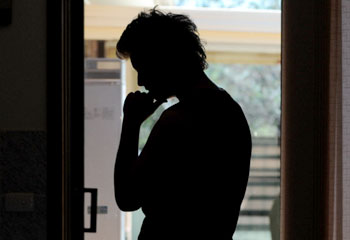From the UNE Dr Dan Riley study.

While teachers in NSW made up the bulk of complaints for the report, teachers in Western Australia and Queensland were over represented. The survey was voluntary.
===
The youtube offering is part of a comedy imitation of a fat, old Hugh Grant. The Hugh who never gets to the point.
2 comments:
Teachers 'bullied more' in public schools
By Tamara Davis
TEACHERS at government schools are bullied more frequently than their colleagues in the independent and Catholic sectors, with a survey suggesting the problem is rife in Western Australia and Queensland.
Preliminary findings from a national survey conducted by the University of New England found government teachers were commonly criticised for their work, excluded from decision-making, threatened, intimidated, shoved and sexually harassed.
The voluntary internet survey attracted more than 800 responses, with 99.8 per cent reporting they had been bullied at school by fellow teachers, principals or parents.
Senior lecturer in business, economics and public policy at UNE, Dan Riley, said the results showed that a disturbing proportion of teachers were being bullied regularly.
"Government schools are not very attentive to bullying," he said. "Claims made (by bullied teachers) often take a long time to be investigated or are ignored altogether."
The survey found bullying was less common in Catholic and independent schools. The most common instance reported at independent schools was insulting emails.
Most complaints were made by teachers in NSW, about 40 per cent, but teachers in Western Australia and Queensland were over-represented in the survey.
The acting federal president of the Australian Education Union, Angelo Gavrielatos, stressed that the survey was voluntary.
"It needs to be recognised that the respondents had self-selected to participate in the survey ... although the issue of bullying is of concern in any workplace, and this is no exception," he said.
Inside the roughest school
By Linda Silmalis
IT has been dubbed the roughest school in NSW. Gangs of marauding students beat one another up and even assault teachers.
Staff at Queanbeyan High have threatened to take legal action after the latest brawl left teachers and a student with broken bones.
Students have also set upon staff with sticks, refused to go to class and threatened teachers with violence outside school hours.
The school is so dangerous, teachers recently took the extraordinary step of moving a no-confidence motion in the principal and his deputy.
Talks are also under way about taking legal action against the NSW Education Department for failing to provide a safe working environment for staff and students.
The latest incident involved two separate attacks that left two teachers and a 15-year-old student seriously injured.
The student's father told The Sunday Telegraph his son was king-hit from behind by a Year 12 student.
"Three male teachers and one female teacher went to help my son, and were escorting him to the office when they were attacked by seven other students," he said.
"One male teacher broke his ribs, another has possible fractures - and the female teacher got elbowed in the temple.
"My son ended up with a broken nose and broken ribs."
The father, who asked that his name not be published, has accused the school of failing in its duty of care to protect his son.
Despite the seriousness of the injuries, the school had refused to call an ambulance, he said.
The school suspended all eight students, although the seven involved in the attack are believed to have been allowed back to class.
The father has written to Education Minister John Della Bosca and the NSW Teachers Federation seeking an explanation.
According to staff statements obtained by The Sunday Telegraph, the incident was one of many at Queanbeyan High, described by federation officials as the roughest school in NSW.
In May, seven teachers tried in vain to stop a brawl between Year 9-10 students and Year 11 students.
In a statement, one of the teachers involved said a student had warned the deputy principal that a brawl was brewing.
"This information should have been passed to staff on duty," the teacher said.
"The deputy principal's response was that boys will be boys, and that they generally tire themselves from punching and stop before too long."
In October, a teacher helping a special-needs student who had fallen over was hit across the head with a large stick by a female student after she was told to go to class.
A department spokesman said the issues raised by the union were being looked at. "The department has a zero-tolerance policy towards violence in schools," he said.
Post a Comment